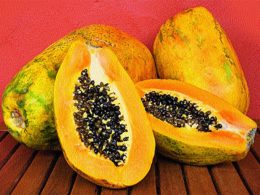FODMAP foods are foods that constitute certain kinds of carbohydrates. They comprise of sugar that can cause IBS symptoms in the digestive system of vulnerable individuals.
Researches indicate that consuming a diet low in FODMAP foods can assist in improving symptoms of irritable bowel syndrome. FODMAP means ‘fermentable oligosaccharides, disaccharides, monosaccharides, and polyols.’
Following a report from clinical epidemiology, irritable bowel movements (IBS) is a common gastrointestinal disorder that affects 11% of the world’s population.
This article discusses the benefits of a low FODMAP diet, how it works, and what studies say about it.
What is a low FODMAP diet?
A group of researchers led by Peter Gibson from Monash University in Melbourne, Australia developed the low FODMAP diet and revealed that a low FODMAP diet improves IBS symptoms.
The diet plan categorises FODMAP foods as high and low. It suggests that individuals with IBS symptoms should avoid high FODMAP foods and go for low FODMAP foods as their daily Staples.
It is essential to take note that serving sizes can also alter how an individual can tolerate some particular foods. For instance, a considerable amount of low FODMAP food can become high FODMAP food.
Foods you should include in your diet and avoid
Low-FODMAP foods that people can consume more liberally than medium and high FODMAP foods are:
- Vegetables: carrots, chives, lettuce, eggplant, cucumber, fennel, broccoli (heads or whole), green beans, zucchini, and baby spinach.
- Fruits: Strawberries, grapes, oranges, pineapple, and kiwifruit.
- Proteins: Chicken, turkey, lamb, cold beef, cuts, tofu, and eggs
- Fish: Crab, lobster, tuna, salmon, and shrimp.
- Fats: Oils, butter, peanuts, pumpkin seeds, macadamias, and walnuts.
- Starches, grains, and cereals: Potatoes, gluten-free bread, brown rice, quinoa, tortilla chips, and popcorn.
High FODMAP foods you should avoid are:
- Vegetables: Garlic, onions, asparagus, shallots, mushrooms, beans, and scallions
- Fruits: Blackberries, dates, prunes, watermelon, peaches, and avocados
- Meats: Sausages, battered meats, breaded meats and meats served with garlic/onion-based sauces and fillings
- Fish: Battered fish, breaded fish, and fish served with onion-based spices or garlic
- Fats: Almonds, pistachios, cashews, and avocado
- Starches, cereals, and grains: Beans, wheat & gluten-based bread, lentils, rye, pastries, muffins, and pasta
When an individual is aware of the difference between high and low FODMAP foods, it makes it easier for them to integrate them into a diet.
Both categories constitute a broad range of food groups. It is important that you talk to a doctor before starting a low FODMAP diet. Doctors do not generally approve this diet plan for long-term use because it eliminates some important nutrient-rich foods.
Nonetheless, many FODMAP foods are prebiotics, which implies they encourage good gut bacteria.
People with an IBS diagnosis that is experiencing the following symptoms may profit from a low FODMAP diet:
- Proceeded gut symptoms regardless of lifestyle and diet changes
- No reaction to stress management exercises
- No symptom relief even after eliminating trigger diets like dairy, alcohol, coffee, and spicy foods
Research
Several sources approve a low FODMAP Diet for people managing IBS symptoms. A clinical trial in 2014 compared the effects of a low FODMAP diet in people with and without IBS.
The research authors discovered that IBS symptoms could be improved in the low FODMAP group within a week of implementing it. People notice improvement with abdominal pain, bloating floating, flatulence, and stool consistency.
A report in clinical and experimental gastroenterology in 2016 discovered that about 86% of people with IBS notice an improvement in their symptoms while on a Low FODMAP Diet.
A report in 2017 discovered that low FODMAP food provides some advantages to people with IBS and also show that certain strains and doses of prebiotics might be beneficial. However, more study is required to clarify which option is best.
Following another 2017 review, it concluded that low FODMAP diets give positive results for IBS symptoms, but did not reveal that FODMAP foods are better than the conventional diet plans for IBS.
How does a FODMAP diet work?
It is crucial for you to know that low FODMAP diets are restrictive and should be short.
A low FODMAP diet includes three stages:
- Elimination: This stage can last from 3 – 8 weeks depending on an individual’s reaction to the diet. The person eradicates all high FODMAPs from their diet.
- Reintroduction: As soon as the elimination stage ends and a person’s symptoms have been significantly improved, they can begin to reintroduce FODMAP foods into their diet for every 3 – 7 days. This can help an individual detect which foods provoke their symptoms.
- Maintenance: The maintenance stage involves returning to a regular diet, restricting only the FODMAP foods that prompt IBS symptoms. Eventually, some people might be able to integrate all or most FODMAPs foods back into their diet without any of their symptoms surfacing.
Researches have shown that symptoms can be improved over time after decreasing FODMAPs in the diet. Nonetheless, it would be helpful if people avoid the FODMAP foods that provoke their symptoms.
What is IBS?
People with IBS suffer from a group of symptoms at the same time but do not seem to possess proof of damage or infections in their digestive system.
IBS prompts the following symptoms:
- Pain in the abdomen
- Bloating and gas
- Indigestion
- A feeling that bowel movements are impaired
- Nausea
- An inability to empty your bowels
- Diarrhoea
- Constipation
Experimenters aren’t aware of the actual cause of IBS. People with IBS can reduce symptoms through diet changes, stress management, medication, behavioural therapy, and several alternative therapies.
A low FODMAP diet may assist in improving symptoms of IBS, but not everyone reacts adequately to this diet. Anyone who is interested in starting a low FODMAP diet should discuss with their doctor or a dietitian regarding the advantages and risks.
Reference;
- What to know about the low FODMAP diet – MedicalNewsToday









